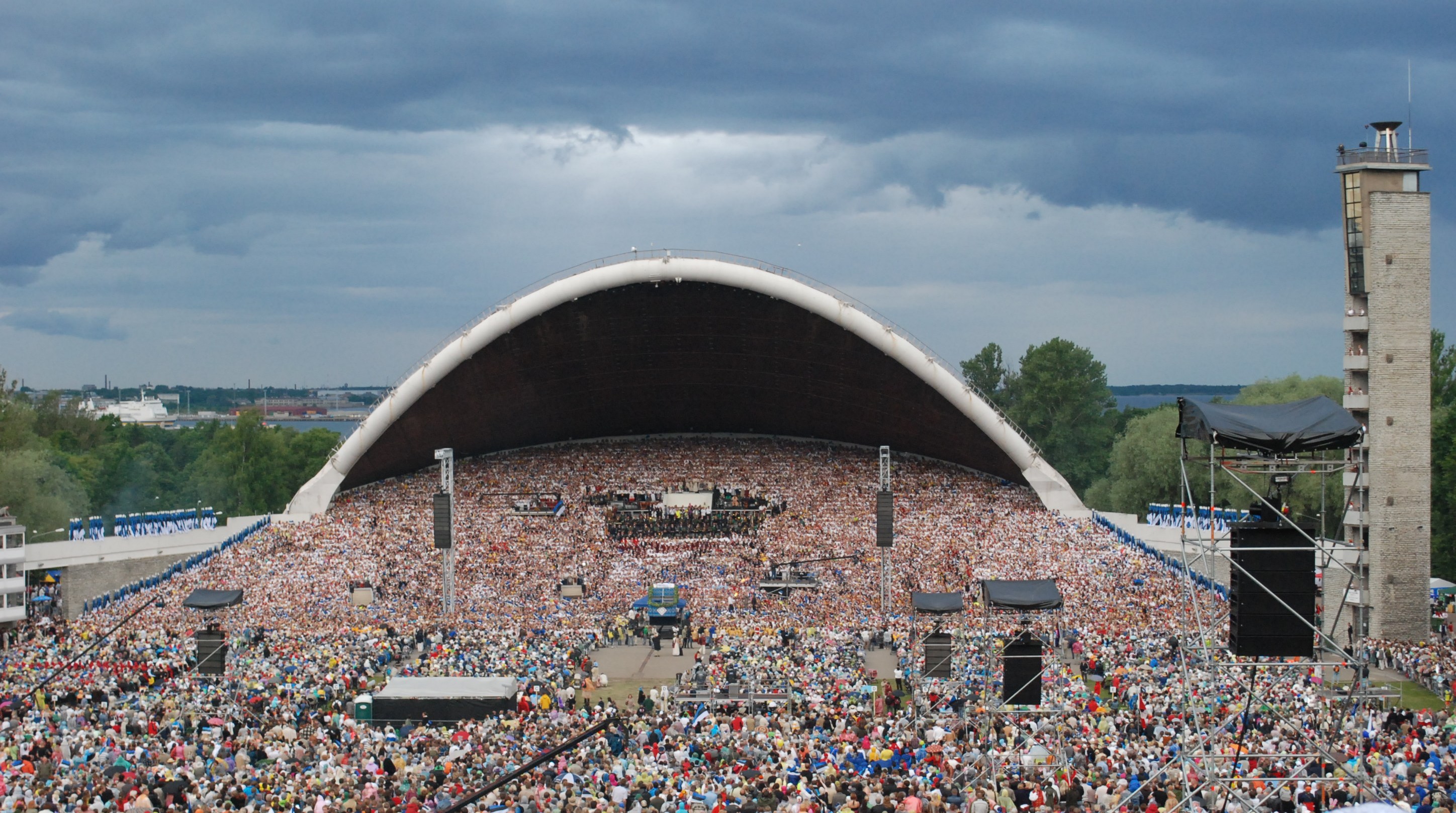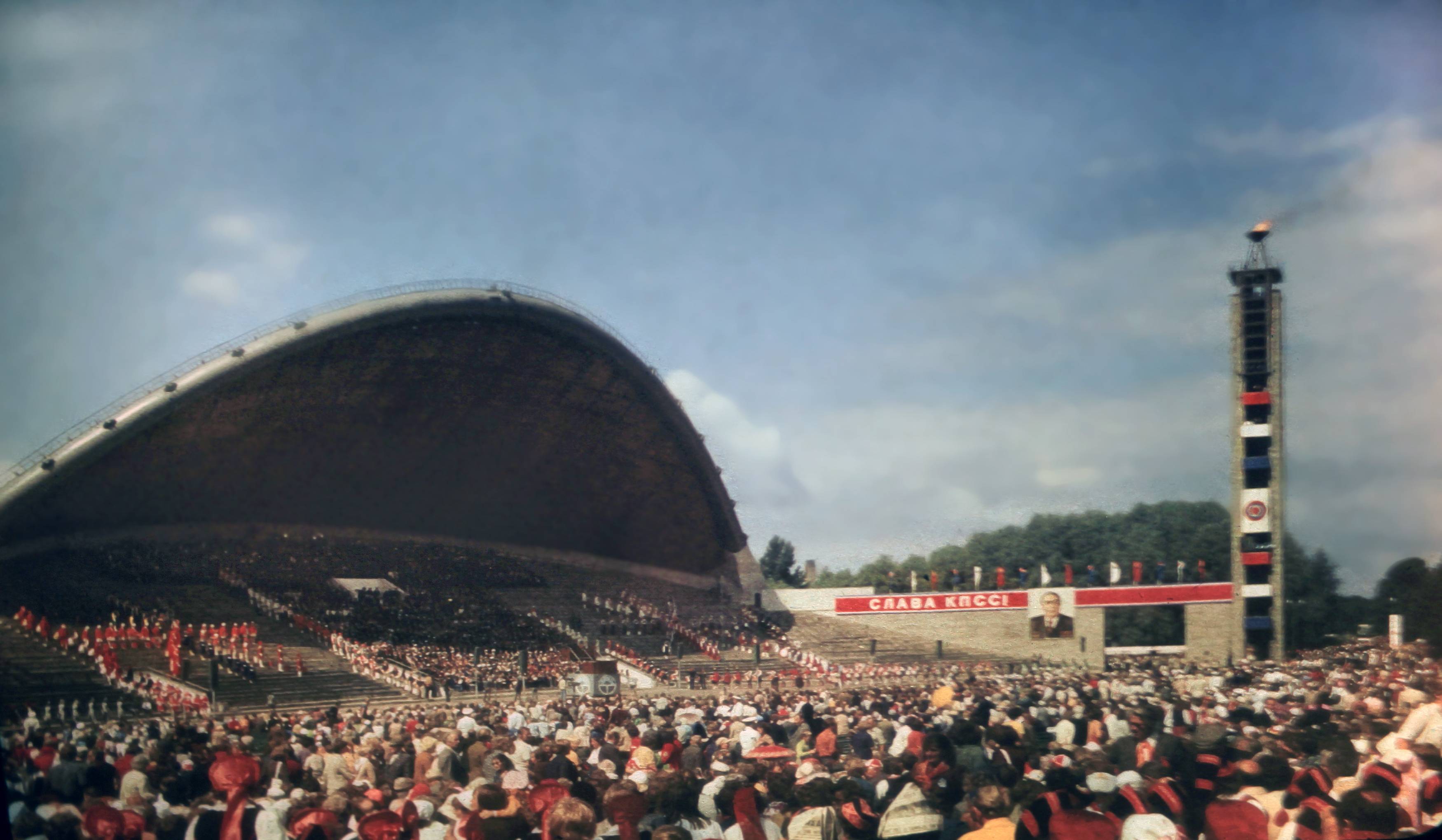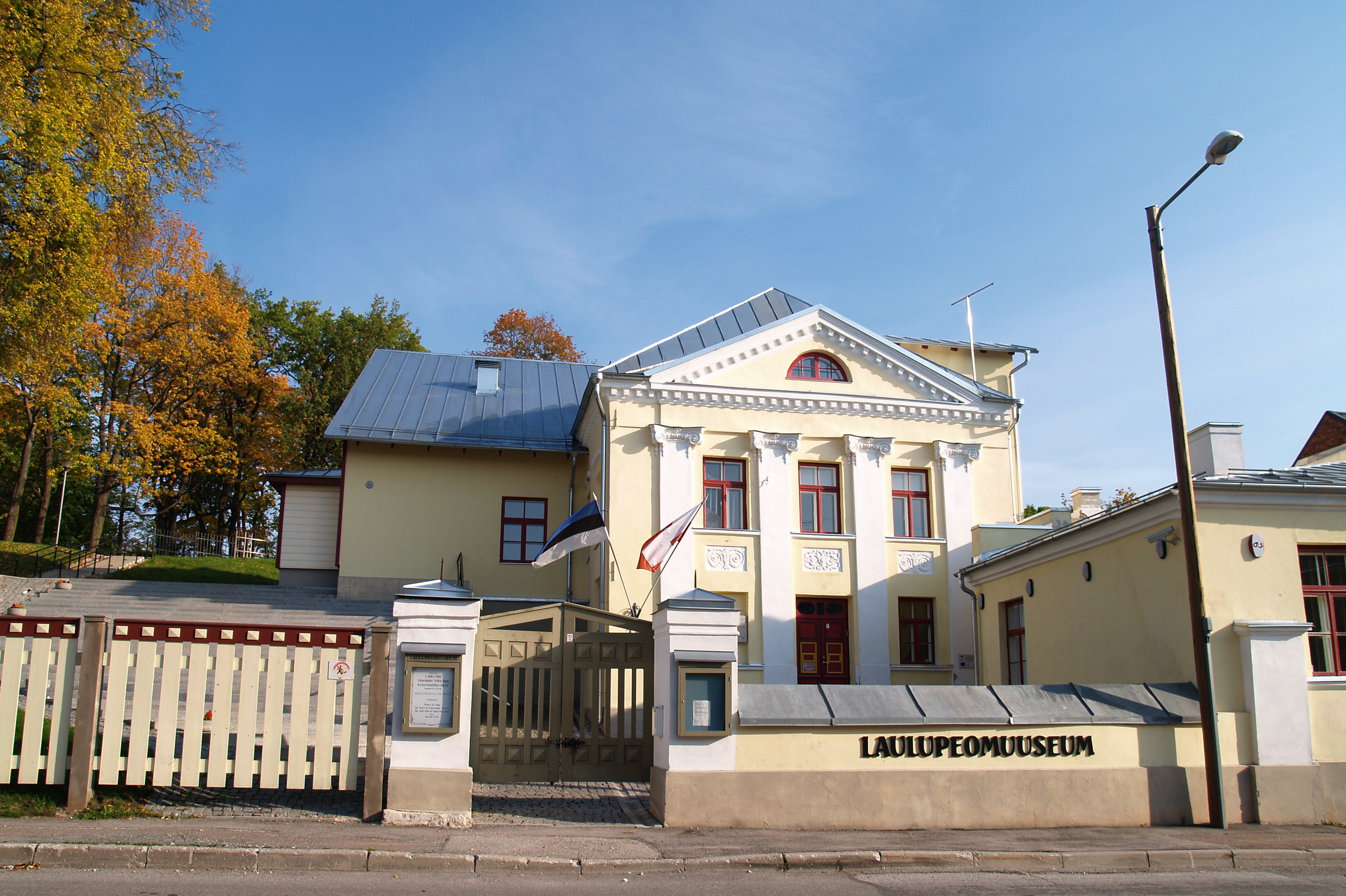Estonian Song Festival on:
[Wikipedia]
[Google]
[Amazon]



 The Estonian Song Festival (in Estonian: ''laulupidu'', ) is one of the largest
The Estonian Song Festival (in Estonian: ''laulupidu'', ) is one of the largest
Estonian Song and Dance Celebration Foundation The joint choir has comprised more than 30,000 singers performing to an audience of 80,000. Almost every Festival features famous Estonian songs " Laul Põhjamaast", " Mu isamaa on minu arm" and the national anthem "
Dance Festival – Invented Tradition?
by Marika Plakso.
Official web site
* ttps://web.archive.org/web/20071109215808/http://www.einst.ee/culture/I_MMIV/arujarv.html The Estonian song festival: a chameleon strategy by ''Evi Arujärv''br>Estonian Punk Song Festival''To Breathe As One''
video about the event
QTVR fullscreen panoramas
of the Estonian Song Festival {{Authority control Masterpieces of the Oral and Intangible Heritage of Humanity 1869 establishments in the Russian Empire Classical music festivals in Estonia Music festivals established in 1869 Summer events in Estonia Music in Tallinn Culture in Tartu


choral
A choir ( ; also known as a chorale or chorus) is a musical ensemble of singers. Choral music, in turn, is the music written specifically for such an ensemble to perform. Choirs may perform music from the classical music repertoire, which ...
events in the world, a Masterpiece of the Oral and Intangible Heritage of Humanity. It is held every five years in July on the Tallinn Song Festival Grounds
The Tallinn Song Festival Grounds ( et, Lauluväljak) are the grounds on which the Estonian Song Festival is held every five years.
History of song festivals
In 1869 Johann Voldemar Jannsen established the Estonian Song Festival while the na ...
(''Lauluväljak'') simultaneously with the Estonian Dance Festival.Estonian Song and Dance CelebrationsEstonian Song and Dance Celebration Foundation The joint choir has comprised more than 30,000 singers performing to an audience of 80,000. Almost every Festival features famous Estonian songs " Laul Põhjamaast", " Mu isamaa on minu arm" and the national anthem "
Mu isamaa, mu õnn ja rõõm
"" (; "My Fatherland, My Happiness and Joy") is the national anthem of Estonia. It was adopted as the national anthem () in 1920.
The lyrics were written by Johann Voldemar Jannsen and are set to a melody composed in 1848 by Fredrik (Friedr ...
".
History
The tradition of the song festival was born along withEstonian national awakening
The Estonian Age of Awakening ( et, Ärkamisaeg) is a period in history where Estonians came to acknowledge themselves as a nation deserving the right to govern themselves. This period is considered to begin in the 1850s with greater rights bein ...
. The first national song festival was held in Tartu
Tartu is the second largest city in Estonia after the Northern European country's political and financial capital, Tallinn. Tartu has a population of 91,407 (as of 2021). It is southeast of Tallinn and 245 kilometres (152 miles) northeast o ...
in the summer of 1869. One of the organisers of the first song festival was Johann Voldemar Jannsen. In the first three festivals only men's choirs and brass orchestras participated. 822 singers and 56 brass players participated in the first festival. Starting with the fourth festival, mixed choirs were also participating. Starting with the sixth festival in 1896, the festival tradition moved to Tallinn.
Starting from 1947, the Soviet authorities forced foreign songs into the repertoire. Every event was to include the State Anthem of the Estonian SSR, The Internationale
"The Internationale" (french: "L'Internationale", italic=no, ) is an international anthem used by various communist and socialist groups; currently, it serves as the official anthem of the Communist Party of China. It has been a standard of th ...
, and the State Anthem of the Soviet Union. Because of the inclusion of children's and boys' choirs the total number of participants rose to 25,000 – 30,000 people. The Dance and Gymnastic Festival of the First Estonian Games started in 1934 became predecessors of later National Dance Festivals accompanying the song festival.by Marika Plakso.
Estonian Institute
The Estonian Institute ( Estonian: ''Eesti Instituut'') is a non-governmental and non-profit organisation based in Tallinn aiming to promote Estonian culture abroad. The institute was founded in 1988/1989 as a shadow foreign office for the Esto ...
In 2019, the number of visitors to the song festival reached its maximum. Nearly 60,000 tickets were sold from the pre-sale for the XXVII song festival "Minu arm"("My love") concert, and together with the 35,000 singers and musicians participating, a situation had been reached where the pre-sale of tickets was suspended by the decision of the organizers for the safety and security of people.
List of Song Festivals
See also
*Latvian Song and Dance Festival
The Latvian Song and Dance Festival ( lv, Vispārējie latviešu Dziesmu un Deju svētki) is one of the largest amateur choral and dancing events in the world and an important event in Latvian culture and social life.
As one of the Baltic song ...
* Lithuanian Song Festival
*Singing Revolution
The Singing Revolution; lv, dziesmotā revolūcija; lt, dainuojanti revoliucija) was a series of events that led to the restoration of independence of the Baltic nations of Estonia, Latvia, and Lithuania from the Soviet Union at the end of t ...
References
External links
Official web site
* ttps://web.archive.org/web/20071109215808/http://www.einst.ee/culture/I_MMIV/arujarv.html The Estonian song festival: a chameleon strategy by ''Evi Arujärv''br>Estonian Punk Song Festival
video about the event
QTVR fullscreen panoramas
of the Estonian Song Festival {{Authority control Masterpieces of the Oral and Intangible Heritage of Humanity 1869 establishments in the Russian Empire Classical music festivals in Estonia Music festivals established in 1869 Summer events in Estonia Music in Tallinn Culture in Tartu